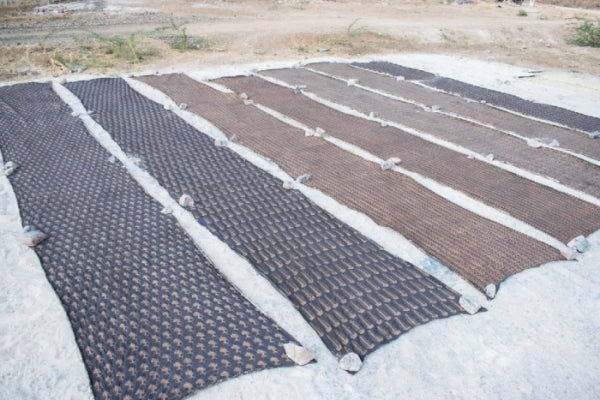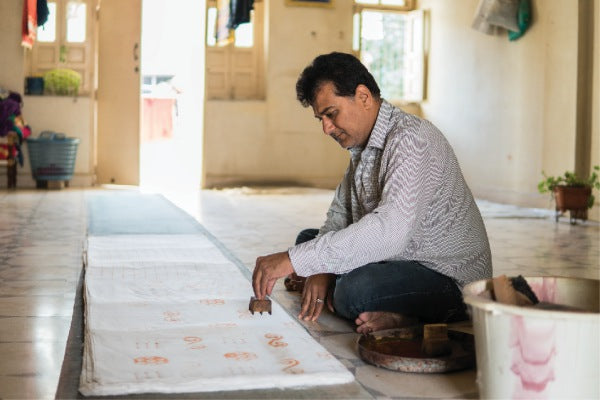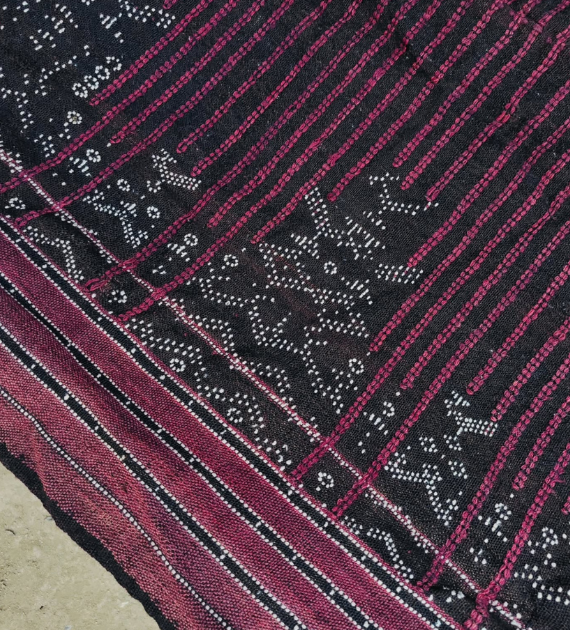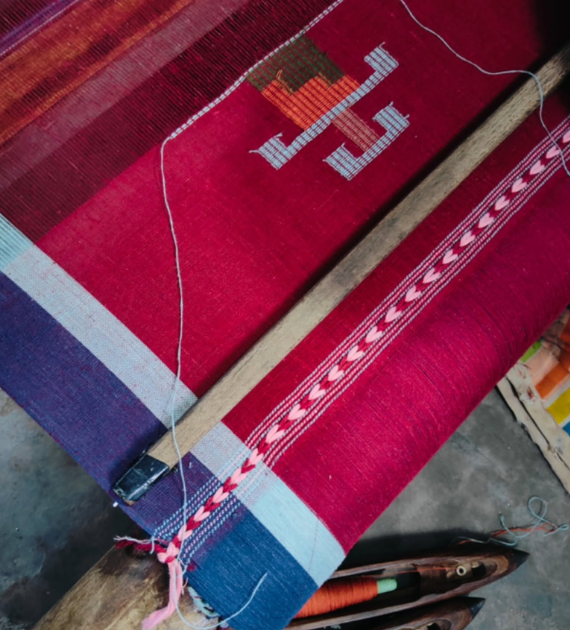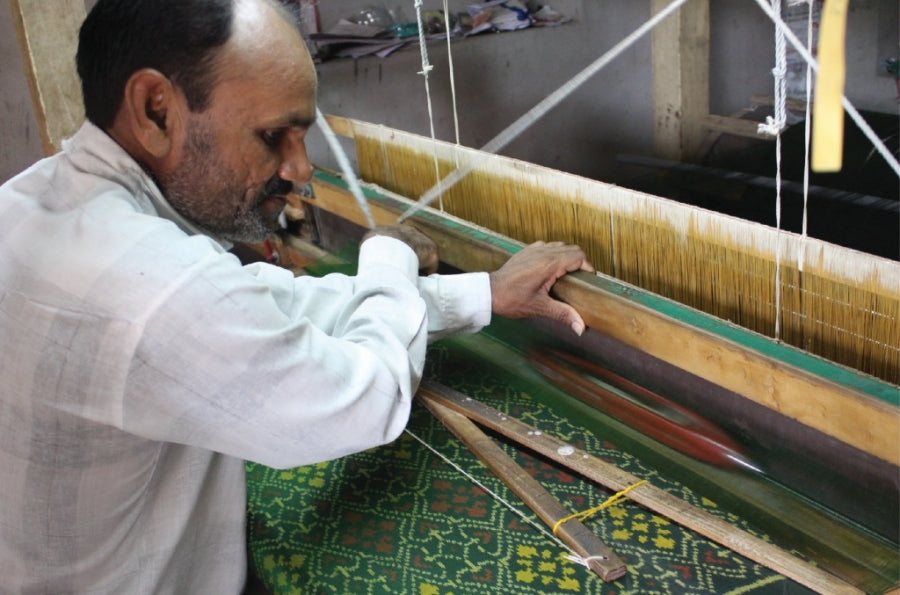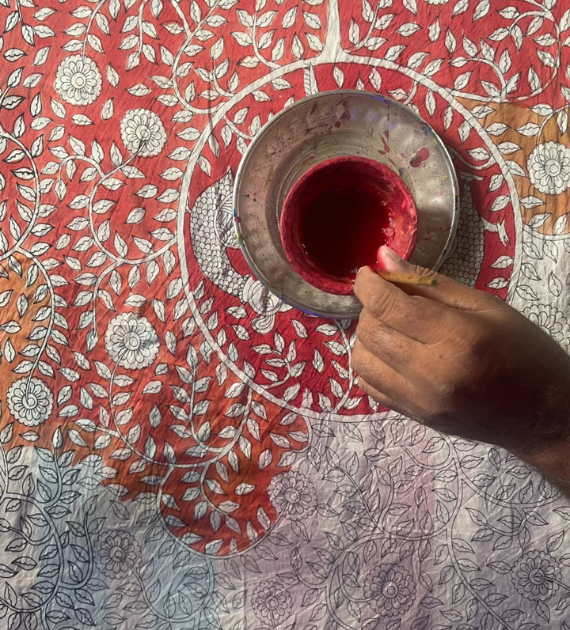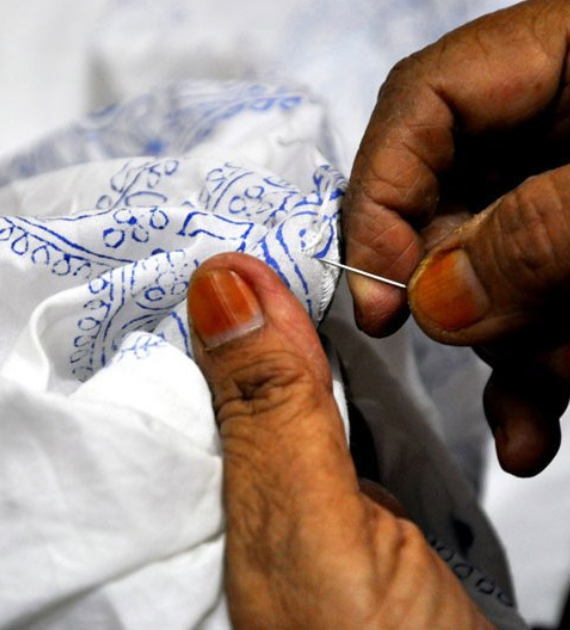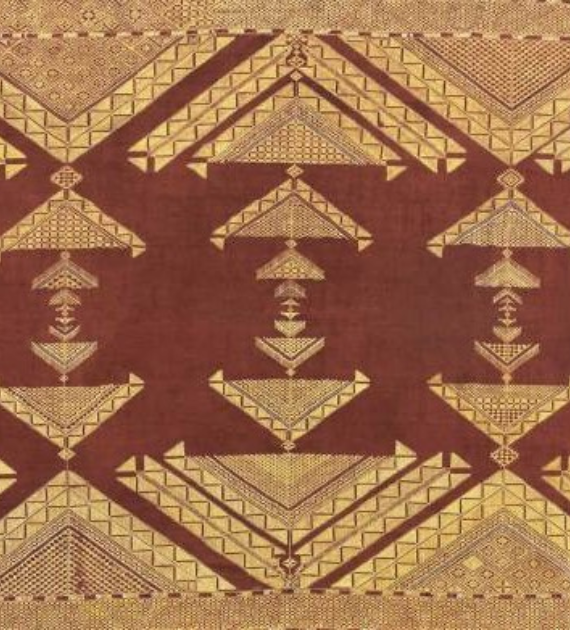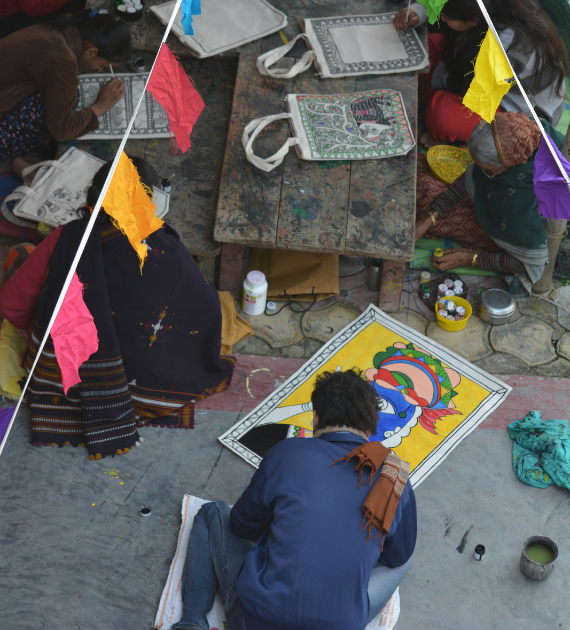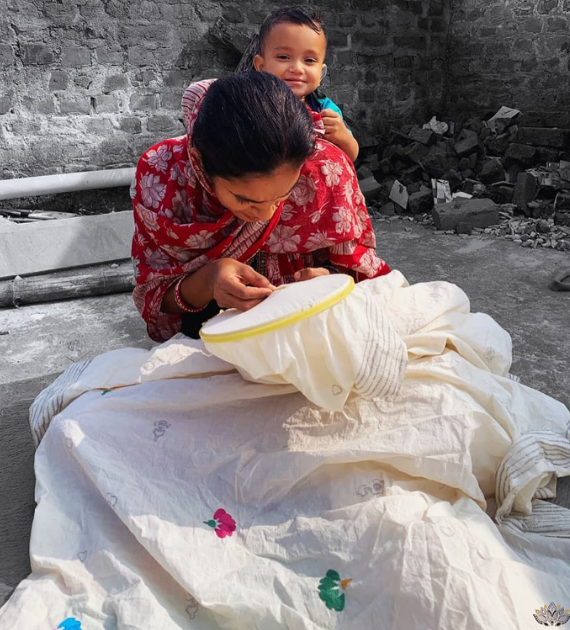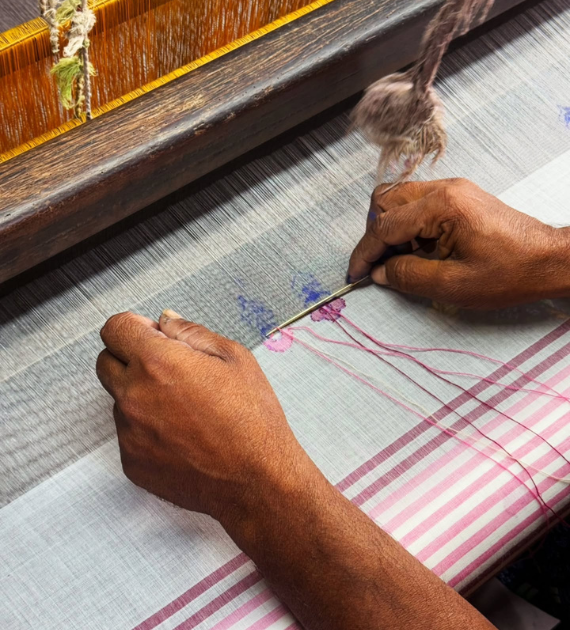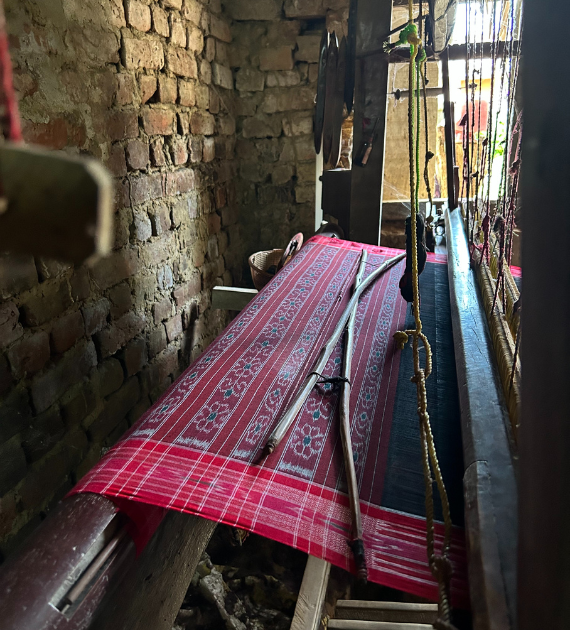Sort by:
SINGLE IKAT PATOLA DUPATTA
Rs. 5,670.00
Made By- Nagar bhaiMEASUREMENTS: Length- 2.25mtr Width- 36 incMATERIAL(S): Pure Silk
SINGLE IKAT PATOLA DUPATTA - new
Rs. 5,040.00
Made By- Nilesh Bhai SHIPPING INFO: Dispatched in a minimum of 5 business days to a maximum of 20 business days. Exchange accepted within 10 days of delivery. Cancellation requests...
SINGLE IKAT PATOLA DUPATTA
Rs. 5,280.00
Made By- Dilip Gohil SHIPPING INFO: Dispatched in a minimum of 5 business days to a maximum of 20 business days. Exchange accepted within 10 days of delivery. Cancellation requests...
SINGLE IKAT PATOLA DUPATTA - new
Rs. 5,880.00
Made By- Nagar bhaiSHIPPING INFO: Dispatched in a minimum of 5 business days to a maximum of 20 business days. Exchange accepted within 10 days of delivery. Cancellation requests will be...
SINGLE IKAT PATOLA DUPATTA
Rs. 5,280.00
Made By- Dilip Gohil SHIPPING INFO: Dispatched in a minimum of 5 business days to a maximum of 20 business days. Exchange accepted within 10 days of delivery. Cancellation requests...
SINGLE IKAT PATOLA DUPATTA
Rs. 5,280.00
Made By- Dilip Gohil SHIPPING INFO: Dispatched in a minimum of 5 business days to a maximum of 20 business days. Exchange accepted within 10 days of delivery. Cancellation requests...
SINGLE IKAT PATOLA DUPATTA
Rs. 5,280.00
Made By- Dilip Gohil SHIPPING INFO: Dispatched in a minimum of 5 business days to a maximum of 20 business days. Exchange accepted within 10 days of delivery. Cancellation requests...
SINGLE IKAT PATOLA DUPATTA
Rs. 5,280.00
Made By- Dilip Gohil SHIPPING INFO: Dispatched in a minimum of 5 business days to a maximum of 20 business days. Exchange accepted within 10 days of delivery. Cancellation requests...
SINGLE IKAT PATOLA DUPATTA
Rs. 5,280.00
Made By- Nilesh Bhai SHIPPING INFO: Dispatched in a minimum of 5 business days to a maximum of 20 business days. Exchange accepted within 10 days of delivery. Cancellation requests...
SINGLE IKAT PATOLA DUPATTA
Rs. 5,280.00
Made By- Nilesh Bhai SHIPPING INFO: Dispatched in a minimum of 5 business days to a maximum of 20 business days. Exchange accepted within 10 days of delivery. Cancellation requests...
SINGLE IKAT PATOLA DUPATTA - new
Rs. 6,300.00
Made By- Jayanti R Gohil SHIPPING INFO: Dispatched in a minimum of 5 business days to a maximum of 20 business days. Exchange accepted within 10 days of delivery. Cancellation requests...
SINGLE IKAT COTTON PATOLA DUPATTA
Rs. 5,000.00
Made By- Amounee SHIPPING INFO: Dispatched in a minimum of 5 business days to a maximum of 20 business days. Exchange accepted within 10 days of delivery. Cancellation requests will...
Single Ikat Patola Dupatta
Rs. 5,990.00
Made By- Nilesh Bhai SHIPPING INFO: Dispatched in a minimum of 5 business days to a maximum of 20 business days. Exchange accepted within 10 days of delivery. Cancellation requests...
SINGLE IKAT PATOLA DUPATTA
Rs. 5,990.00
Made By- Jayanti R Gohil SHIPPING INFO: Dispatched in a minimum of 5 business days to a maximum of 20 business days. Exchange accepted within 10 days of delivery. Cancellation requests...
SINGLE IKAT PATOLA DUPATTA
Rs. 5,990.00
Made By- Nilesh Bhai SHIPPING INFO: Dispatched in a minimum of 5 business days to a maximum of 20 business days. Exchange accepted within 10 days of delivery. Cancellation requests...
SINGLE IKAT PATOLA DUPATTA
Rs. 5,990.00
Made By- Nilesh Bhai SHIPPING INFO: Dispatched in a minimum of 5 business days to a maximum of 20 business days. Exchange accepted within 10 days of delivery. Cancellation requests...
SINGLE IKAT PATOLA DUPATTA - new
Rs. 5,103.00
Made By- Nilesh Bhai SHIPPING INFO: Dispatched in a minimum of 5 business days to a maximum of 20 business days. Exchange accepted within 10 days of delivery. Cancellation requests...
SINGLE IKAT PATOLA DUPATTA
Rs. 5,280.00
Made By- Nagar bhaiSHIPPING INFO: Dispatched in a minimum of 5 business days to a maximum of 20 business days. Exchange accepted within 10 days of delivery. Cancellation requests will be...
SINGLE IKAT PATOLA DUPATTA - new
Rs. 5,292.00
Made By- Nagar bhai SHIPPING INFO: Dispatched in a minimum of 5 business days to a maximum of 20 business days. Exchange accepted within 10 days of delivery. Cancellation requests will...
SINGLE IKAT PATOLA DUPATTA - new
Rs. 5,292.00
Made By- Nagar bhaiSHIPPING INFO: Dispatched in a minimum of 5 business days to a maximum of 20 business days. Exchange accepted within 10 days of delivery. Cancellation requests will be...
SINGLE IKAT PATOLA DUPATTA - new
Rs. 6,720.00
Made By- Nagar bhaiSHIPPING INFO: Dispatched in a minimum of 5 business days to a maximum of 20 business days. Exchange accepted within 10 days of delivery. Cancellation requests will be...
SINGLE IKAT PATOLA DUPATTA
Rs. 20,790.00
Made By- Jayanti bhaiSHIPPING INFO: Dispatched in a minimum of 5 business days to a maximum of 20 business days. Exchange accepted within 10 days of delivery. Cancellation requests will be...
SINGLE IKAT PATOLA DUPATTA
Rs. 5,280.00
Made By- Dilip Gohil SHIPPING INFO: Dispatched in a minimum of 5 business days to a maximum of 20 business days. Exchange accepted within 10 days of delivery. Cancellation requests...
SINGLE IKAT PATOLA DUPATTA
Rs. 5,280.00
Made By- Dilip Gohil SHIPPING INFO: Dispatched in a minimum of 5 business days to a maximum of 20 business days. Exchange accepted within 10 days of delivery. Cancellation requests...
SINGLE IKAT PATOLA DUPATTA
Rs. 5,280.00
Made By- Dilip Gohil SHIPPING INFO: Dispatched in a minimum of 5 business days to a maximum of 20 business days. Exchange accepted within 10 days of delivery. Cancellation requests...
SINGLE IKAT PATOLA DUPATTA
Rs. 5,280.00
Made By- Dilip Gohil SHIPPING INFO: Dispatched in a minimum of 5 business days to a maximum of 20 business days. Exchange accepted within 10 days of delivery. Cancellation requests...
SINGLE IKAT PATOLA DUPATTA
Rs. 5,280.00
Made By- Dilip Gohil SHIPPING INFO: Dispatched in a minimum of 5 business days to a maximum of 20 business days. Exchange accepted within 10 days of delivery. Cancellation requests...
SINGLE IKAT PATOLA DUPATTA
Rs. 5,280.00
Made By- Dilip Gohil SHIPPING INFO: Dispatched in a minimum of 5 business days to a maximum of 20 business days. Exchange accepted within 10 days of delivery. Cancellation requests...
SINGLE IKAT PATOLA DUPATTA
Rs. 5,280.00
Made By- Dilip Gohil SHIPPING INFO: Dispatched in a minimum of 5 business days to a maximum of 20 business days. Exchange accepted within 10 days of delivery. Cancellation requests...
SINGLE IKAT PATOLA DUPATTA
Rs. 5,280.00
Made By- Dilip Gohil SHIPPING INFO: Dispatched in a minimum of 5 business days to a maximum of 20 business days. Exchange accepted within 10 days of delivery. Cancellation requests...
SINGLE IKAT PATOLA DUPATTA
Rs. 5,280.00
Made By- Dilip Gohil SHIPPING INFO: Dispatched in a minimum of 5 business days to a maximum of 20 business days. Exchange accepted within 10 days of delivery. Cancellation requests...
SINGLE IKAT PATOLA DUPATTA
Rs. 5,280.00
Made By- Dilip Gohil SHIPPING INFO: Dispatched in a minimum of 5 business days to a maximum of 20 business days. Exchange accepted within 10 days of delivery. Cancellation requests...
SINGLE IKAT PATOLA DUPATTA
Rs. 5,280.00
Made By- Dilip Gohil SHIPPING INFO: Dispatched in a minimum of 5 business days to a maximum of 20 business days. Exchange accepted within 10 days of delivery. Cancellation requests...
SINGLE IKAT PATOLA DUPATTA
Rs. 5,280.00
Made By- Dilip Gohil SHIPPING INFO: Dispatched in a minimum of 5 business days to a maximum of 20 business days. Exchange accepted within 10 days of delivery. Cancellation requests...
SINGLE IKAT PATOLA DUPATTA
Rs. 5,280.00
Made By- Nilesh Bhai SHIPPING INFO: Dispatched in a minimum of 5 business days to a maximum of 20 business days. Exchange accepted within 10 days of delivery. Cancellation requests...
SINGLE IKAT PATOLA DUPATTA
Rs. 5,280.00
Made By- Dilip Gohil SHIPPING INFO: Dispatched in a minimum of 5 business days to a maximum of 20 business days. Exchange accepted within 10 days of delivery. Cancellation requests...
SINGLE IKAT PATOLA DUPATTA
Rs. 5,280.00
Made By- Nilesh Bhai SHIPPING INFO: Dispatched in a minimum of 5 business days to a maximum of 20 business days. Exchange accepted within 10 days of delivery. Cancellation requests...
SINGLE IKAT PATOLA DUPATTA
Rs. 5,280.00
Made By- Nilesh Bhai SHIPPING INFO: Dispatched in a minimum of 5 business days to a maximum of 20 business days. Exchange accepted within 10 days of delivery. Cancellation requests...
SINGLE IKAT PATOLA DUPATTA - new
Rs. 5,280.00
Made By- Dilip bhaiSHIPPING INFO: Dispatched in a minimum of 5 business days to a maximum of 20 business days. Exchange accepted within 10 days of delivery. Cancellation requests will be...
SINGLE IKAT COTTON PATOLA DUPATTA
Rs. 5,000.00
Made By- Amounee SHIPPING INFO: Dispatched in a minimum of 5 business days to a maximum of 20 business days. Exchange accepted within 10 days of delivery. Cancellation requests will...
SINGLE IKAT COTTON PATOLA DUPATTA
Rs. 5,000.00
Made By- Amounee SHIPPING INFO: Dispatched in a minimum of 5 business days to a maximum of 20 business days. Exchange accepted within 10 days of delivery. Cancellation requests will...
SINGLE IKAT COTTON PATOLA DUPATTA
Rs. 5,000.00
Made By- Amounee SHIPPING INFO: Dispatched in a minimum of 5 business days to a maximum of 20 business days. Exchange accepted within 10 days of delivery. Cancellation requests will...
SINGLE IKAT COTTON PATOLA DUPATTA
Rs. 5,000.00
Made By- Amounee SHIPPING INFO: Dispatched in a minimum of 5 business days to a maximum of 20 business days. Exchange accepted within 10 days of delivery. Cancellation requests will...
SINGLE IKAT PATOLA DUPATTA
Rs. 5,500.00
Made By- Nagar bhai SHIPPING INFO: Dispatched in a minimum of 5 business days to a maximum of 20 business days. Exchange accepted within 10 days of delivery. Cancellation requests will...
SEMI DOUBLE IKAT PATOLA DUPATTA
Rs. 18,700.00
Made By- Jayanti bhai SHIPPING INFO: Dispatched in a minimum of 5 business days to a maximum of 20 business days. Exchange accepted within 10 days of delivery. Cancellation requests will...
SEMI DOUBLE IKAT PATOLA DUPATTA
Rs. 18,700.00
Made By- Jayanti bhai SHIPPING INFO: Dispatched in a minimum of 5 business days to a maximum of 20 business days. Exchange accepted within 10 days of delivery. Cancellation requests will...
SEMI DOUBLE IKAT PATOLA DUPATTA
Rs. 18,700.00
Made By- Jayanti bhai SHIPPING INFO: Dispatched in a minimum of 5 business days to a maximum of 20 business days. Exchange accepted within 10 days of delivery. Cancellation requests will...
SEMI DOUBLE IKAT PATOLA DUPATTA
Rs. 18,700.00
Made By- Jayanti bhai SHIPPING INFO: Dispatched in a minimum of 5 business days to a maximum of 20 business days. Exchange accepted within 10 days of delivery. Cancellation requests will...


